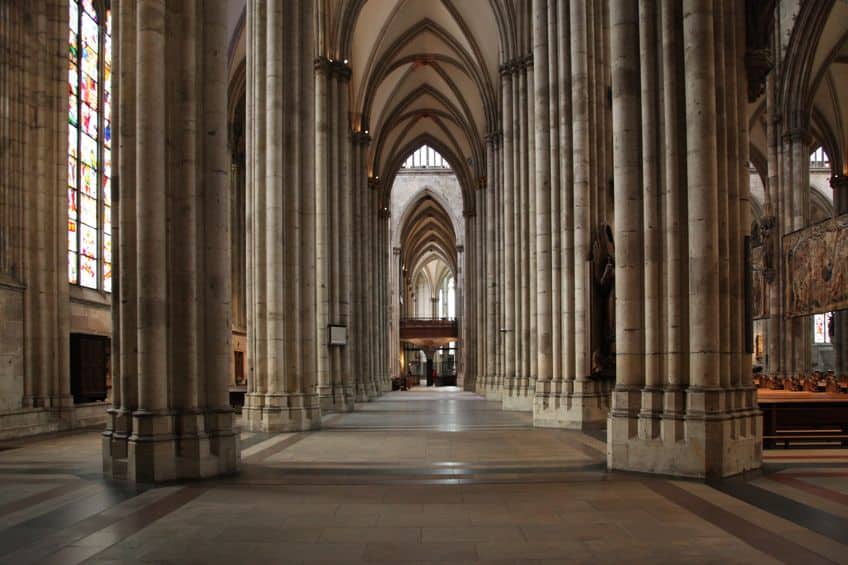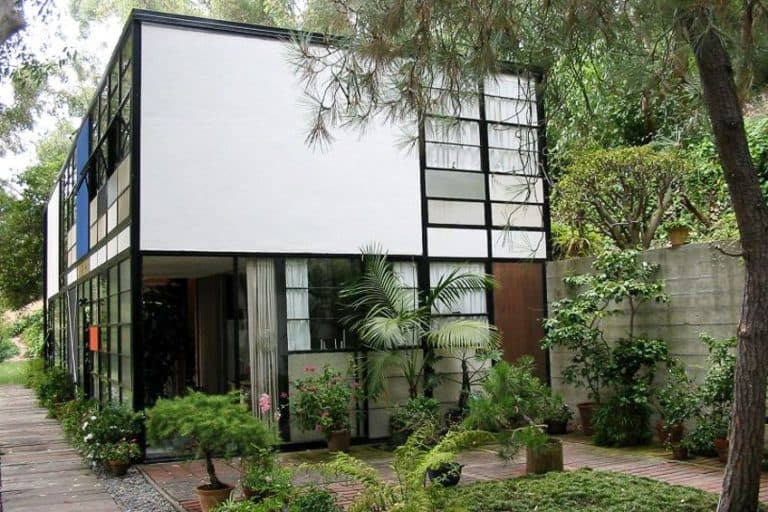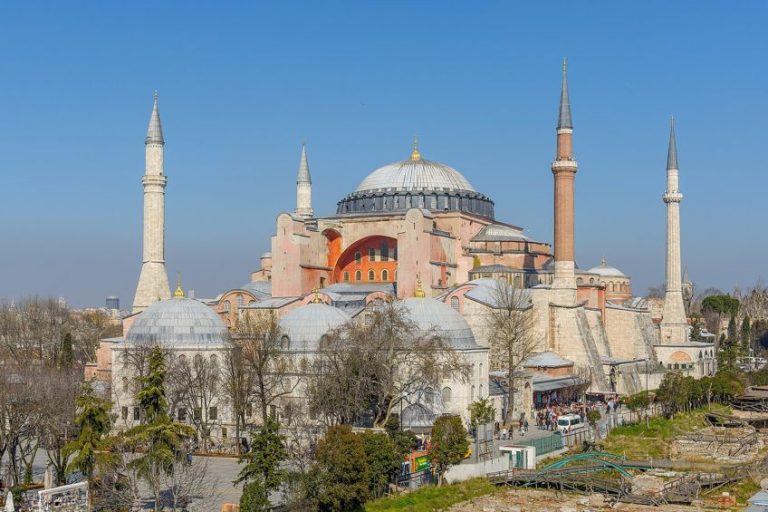Cologne Cathedral – The Historical Cologne Cathedral Interior
Cologne Cathedral’s charming Romanesque and Gothic architecture draws tourists from all over the world daily. Also known as the Koelner Dom or Cologne Dom, the cathedral is the Archbishop of Cologne’s seat. To find out everything you want to know about the Cologne Cathedral’s interior and façade, as well as all the interesting Cologne Cathedral facts, carry on reading below!
An In-Depth Look at the Cologne Cathedral
| Architect | Master Gerhard (1210 – 1271) |
| Date Completed | 1880 |
| Function | Cathedral |
| Location | Cologne, Germany |
Located directly next to the main train station of Cologne Germany, the cathedral is the very first monument seen from the airport railway, which transports hundreds of people every hour between the German metropolis and the surrounding areas and beyond. Nowadays, Koelner Dom is regarded as the icon of Cologne, visible from nearly every vantage spot in the city. Around 100 craftspeople are presently engaged full-time to renovate the Cologne Dom and preserve it in pristine condition for future generations.

History of the Cologne Cathedral
Before the completion of the Koelner Dom, Cologne was considered to be a rather quiet community that did not leave much of an impression on the global map. That began to change in the 12th century when Archbishop Rainald von Dassel returned from his trip to Italy with special relics. Cologne Dom, like so many other basilicas, cathedrals, and large edifices around Europe, was built over many years. Despite the fact that work on the ecclesiastical structure started in 1248, the towers were only finally completed in 1880. However, there is more to the story of Cologne Germany, the cathedral, and the relics.
The site had already previously been utilized for many earlier buildings before work on the current Cologne Cathedral commenced with the placement of the foundation stone in 1248. Let’s start with the ancient use of the site.
Ancient Utilization of the Site
The first structure may possibly have been used for grain storage and replaced by a Roman temple erected by Mercurius Augustus. Yet, starting in the 4th century, the region was covered with Christian structures, such as the “oldest cathedral”, a square structure ordered to be built by Maternus, the first bishop of Cologne. A free-standing baptistery from the 7th century stood near the east end of the current cathedral, but it was dismantled in the 9th century to make way for the new cathedral. During the current cathedral’s excavations, tombs were unearthed in the area of the oldest segment of the structure, including one of a child lavishly decorated with grave ornaments and a second of a woman, widely assumed to be Wisigard. Both burials are considered to date to the 6th century. The second cathedral, known as the “Old Cathedral”, was finished in 818 CE and was razed by fire on the 30th of April 1248.

The Cologne Cathedral’s Medieval Beginnings
Rainald of Dassel, Archbishop of Cologne, received the relics of the Three Kings that Frederick Barbarossa had seized from the Basilica of Sant’Eustorgio in 1164. Some of the remains were later restored to Milan. The relics have immense religious importance and have drawn people from all over the world. It was crucial to church authorities that they be adequately housed, therefore they launched a construction program in the new Gothic architectural style, based mostly on the cathedral of Amiens in France.
Archbishop Konrad von Hochstaden laid the foundation stone on the 15th of August 1248.
The eastern wing was finished under Master Gerhard’s leadership, dedicated in 1322, and blocked off by a provisional wall so it could be utilized while the work was being completed. Master Michael began construction on the west front in the mid-14th century. This construction was completed in 1473, leaving the southern tower constructed up to the belfry level and capped with a massive crane. Construction on the building of the nave between the western front and the eastern wing continued intermittently until the 16th century.
Completion in the 19th Century
Prompted by the 19th-century Romantic fervor for the Medieval era and driven by the rediscovery of the initial facade plan, it was determined to build the cathedral with the support of the Protestant Prussian Court. The Central-Dombau Verein, created in 1842, financed two-thirds of the massive expenditures, with the Prussian state covering the other third. The state considered this as a method to strengthen ties with the vast number of Catholic citizens it had received in 1815, but it was also viewed as a project to represent German nationhood after 1871.

Production on the original plan of the extant medieval blueprints and drawings was restarted in 1842, but with more contemporary building techniques, such as iron roof girders. The nave was finished, and the towers were built. The bells were hung in the 1870s. On the 14th of August 1880, more than 630 years after work began, Germany’s greatest cathedral was finally completed. Emperor Wilhelm I attended the ceremony. It was the highest structure on the planet for four years, until the construction of the Washington Monument.
The Cologne Cathedral in WW2
During WWII, the cathedral was struck 14 times by aircraft bombs. Despite being severely damaged, it stood strong in a city that had been utterly destroyed. The twin spires served as an immediately identifiable navigational point for Allied bombers. On the 6th of March 1945, a spot west of the cathedral saw fierce fighting between American tanks from a Panther Ausf and the 3rd Armored Division. A nearby Panzer, a German medium tank, was parked beside a mound of wreckage outside a train station, directly next to the Cologne Cathedral’s twin spires.
The Panzer took out two tanks, and killed three troops, before being annihilated minutes later by a T26E3 Pershing. For the duration of the war, the wrecked Panzer was displayed at the foot of the cathedral.
Damage repairs were concluded in 1956. An emergency repair to the northwestern tower’s base, completed in 1944 using low-quality brick salvaged from a neighboring wrecked structure, was visible as a memory of the war until 2005 when it was determined to restore the portion to its former aesthetic. Archaeological investigations started in 1946 under the direction of Otto Doppelfeld to determine if the bombings had harmed the Koelner Dom’s foundations and were completed in 1997.

In one of the most significant church excavations, they discovered previously unknown elements of ancient buildings on the site. As rain, wind, and pollution erode the stones, maintenance, and repair work is routinely carried out in one or more sections of the structure, which is rarely totally free of scaffolding. The Dombauhütte, which was formed to construct and maintain the Cologne Dom is believed to use the greatest stonemasons in the Rhineland. The Central-Dombau Verein continues to bear half of the expenditures of repair and upkeep.
Cologne Cathedral in the 21st Century
During his apostolic tour to Germany for World Youth Day in 2005, Pope Benedict XVI made a stop at the Koelner Dom on the 18th of August 2005. During this period, approximately one million people viewed the Cologne Cathedral’s interior. As part of World Youth Day celebrations, Cologne Cathedral presented a broadcast gala production of Beethoven’s Missa Solemnis, directed by Sir Gilbert Levine and delivered by the London Philharmonic Choir and the Royal Philharmonic Orchestra.
The Cologne Dom was fitted with a new stained-glass window in the southern transept on the 25th of August 2007.
Gerhard Richter, a German artist, constructed the 113-square-meter glass sculpture, with contributions covering the €400,000 cost. It is constructed of 11,500 equally sized shards of colored glass emulating pixels, randomly assembled by software, which produces a colorful carpet-like effect. Since the original window was destroyed during WWII, the opening had been temporarily covered with plain glass.
The Architecture of the Cologne Cathedral
In terms of the floor plan, design, and the height-to-width proportions of the central nave, the Cologne Cathedral’s design very closely resembled that of Amiens Cathedral. The plan is arranged like a Latin Cross, as is typical of Gothic churches. It contains two aisles on the sides, which assist to sustain one of the world’s tallest Gothic vaults, almost as high as that in the Beauvais Cathedral, the majority of which collapsed. The outward force of the vault is absorbed externally by flying buttresses in the French style.

The Cologne Cathedral’s inside adornment is equally remarkable. The medieval choir is more diversified than the 19th-century structure. It has a French-style layout of a very tall arcade, a delicate thin triforium gallery illuminated by windows, and elaborate tracery that merges with that of the windows above. The clerestory windows are long, with some figurative glass remaining in the lower parts. The towering shafts that stretch uninterrupted from the floor to their capitals at the vault’s spring bring the entire structure together. The vault has a simple quadripartite layout.
The choir still has many of its original fixtures, notably the carved stalls, which is remarkable given that French Revolutionary forces vandalized the structure.
A massive stone sculpture of St Christopher stares down at the previous entrance to the cathedral before it was completed in the late 19th century. Many stained-glass windows from the 19th century may be seen in the nave. The Bayernfenster, a group of five windows on the southern side, was a donation from Ludwig I of Bavaria and vividly depicts the German painterly style of the time. Externally, the structure is dominated by its massive spires, which are totally Germanic in style, being openwork like those of Vienna, Ulm, and Strasbourg cathedrals.
Notable Treasures and Artworks of the Cologne Cathedral
The High Altar, which was erected in 1322, is one of the cathedral’s treasures. It is made of black marble, with a 4.5-meter-long solid slab constituting the top. The sides and front are covered with white marble recesses into which statues are inserted, with the Coronation of the Virgin (1350) in the center. The Shrine of the Three Kings, ordered by Philip von Heinsberg, archbishop of Cologne from 1167 to 1191, and completed in 1190 by Nicholas of Verdun, is the cathedral’s most acclaimed piece of art.

It is said to house the relics of the Three Wise Men, whose remains were seized by Frederick Barbarossa during his invasion of Milan in 1164. The shrine is a massive reliquary in the style of a basilica, composed of silver and bronze, gilded and embellished with architectonic features, figurative sculptures, gemstones, and enamels. The shrine was discovered to contain bones and clothes when it was uncovered in 1864. The Gero Crucifix, located near the sacristy, is a massive crucifix crafted from oak with remnants of gilding and paint still visible.
It is the earliest-known significant free-standing Northern artwork of the medieval era, thought to have been produced around 960 CE for Archbishop Gero.
The St. Mary’s Chapel houses the altar of Cologne’s patron saints, with an altarpiece by renowned Gothic artist Stefan Lochner. The radiating chapels were initially used as burial places once they were completed in 1265. The relics of Saint Irmgardis were interred at the St. Agnes’ Chapel. The cathedral masons’ guild is said to have constructed her trachyte tomb in about 1280.
Interesting Cologne Cathedral Facts
That wraps up the history of Cologne Cathedral. However, for those of you who do not necessarily enjoy reading through the entire history of the Cologne Dom, we have compiled some of the most interesting Cologne Cathedral facts for you. Let’s start with its heritage status.
- The cathedral was placed on the UNESCO World Heritage List of culturally significant monuments in 1996. It was included as the sole Western site in danger on the “World Heritage in Danger” list in 2004, because of proposals to erect many high-rise structures nearby, which would have dramatically affected the site. Given the authorities’ resolution to restrict the heights of structures built close to and around the building, the Koelner Dom was taken off the list in 2006.
- Construction took some time. It takes time to build cathedrals for a couple of reasons. The first is that the majority of them were constructed prior to the use of electric or steam power, thus all of those big stones had to be moved, cut, and fastened using rudimentary tools. The second argument is that cathedral construction is costly. The Cologne Cathedral is a prime example: construction began in 1248 and was not finalized until the two large towers were erected in 1880.
- The Cologne Cathedral has a capacity of around 20,000 people. The Cologne Dom is vast, with around 8,000 square meters of floor space. This makes the inside of Cologne Cathedral the third-largest church in the world. The cathedral’s choir is the biggest in Germany. Its most notable feature is two seats designated for the King and Pope.

- The Cologne Cathedral’s top part houses 11 church bells. One of the bells in Cologne Cathedral weighs 24 tons. Eight bells are housed in cages in the southern spire, while three are housed on the ridge turret. The first to be placed was the 3.4-ton bell of the Three Kings. The largest bell in the Cathedral, St. Peter’s Bell, was cast in 1922. It weighs 24 tons, has a width of 3.2 meters, and was brought to Cologne in 1875.
- The City of Cologne can be viewed from above. Because of its towers, the Cologne Cathedral was the highest structure in the world between 1880 and 1884. The towers were erected in the 19th century in accordance with the original designs, and the south tower was adorned with a platform that is still available to visitors today and offers a sweeping view of the entire city below.
- The Cologne Cathedral inside is incredibly beautiful. The cathedral is a veritable museum, with several excellent altarpieces. Visitors may witness the earliest stained-glass window in Germany, which stretches back to the 13th century and is regarded as the earliest intact ‘Bible window’ in the Cathedral Chapel. Furthermore, the Cologne Cathedral holds the earliest portrayal of the Crucifixion in Western Art, a carved-in-oak Gero Crucifix dating from the 970s and often regarded as the oldest surviving architectural artwork.
The Cologne Cathedral is the most visited attraction in the city. Its tale begins in 1248, propelled by human desire. The Cologne Cathedral, an architectural wonder that is supposed to have made the devil envious, includes extraordinary artworks and holy relics that continue to astonish millions of tourists today. The Cologne Dom, with its massive twin spires embellished with magnificent sculptures, is recognized for possessing the world’s biggest façade of any cathedral!
Frequently Asked Questions
Why Was the Koelner Dom Built?
The Three Wise Men arrived in Bethlehem after following a star, carrying gifts for the infant Jesus. When their task was finished, they returned home and were never seen or heard from again. It wasn’t until many centuries later that Saint Helen found the Wise Men’s remains and transported them to Constantinople. The remains were moved to Milan in 314 CE and stayed there for 800 years until Archbishop Rainald von Dassel took them to Cologne in 1164. A golden temple was built years later to protect the bones of the three Kings, but it was insufficient. A magnificent cathedral seemed a better choice for carefully keeping the remains. The Cologne Cathedral’s inside halls now house the relics.
What Happened to the Cologne Cathedral in WW2?
During WWII, around 70 firebombs and 14 very powerful bombs were dropped on the cathedral. Fortunately, its size and recognized structure rescued it from total destruction by serving as a point of reference for pilots flying above the city. The choir and transept had already been rebuilt by 1948, but the west wing and façade took longer to recover. Fortunately, despite several attacks, the cathedral’s basic design was saved, and it currently stands as a superb blend of Gothic architecture and the 19th-century Neo-Gothic revival.
How Long Did It Take to Build the Cologne Cathedral?
The construction started in 1248, and by 1265, the choir aisles and chevet had been finished. Despite the fact that building on the cathedral ceased and certain elements remained incomplete, it was consecrated in 1322. Due to the French Revolution, when the city was captured by the French soldiers, the structure was repurposed as a jail, with portions of it turned into storage rooms and barracks, and the furniture of the nave used mostly for firewood. The renovation began again in the 19th century, and the Germans marked the inauguration of the magnificent cathedral with a national celebration in 1880.
What Notable Works Are Housed in the Cologne Cathedral?
The Chapel of the Virgin is decorated with The Patron Saints of Cologne (c. 1440), an altarpiece produced by Stephan Lochner, the most important artist of his time in Cologne, while a stained-glass window in the southern transept lends a contemporary touch to the cathedral. The modern art sculpture, created by famous German artist Gerhard Richter, is made up of about 11,000 equally sized glass pieces in 72 hues. Finally, it is stated that the magnificent wooden statue depicting the Virgin Mary carrying Jesus possesses mystical abilities.
Justin van Huyssteen is a freelance writer, novelist, and academic originally from Cape Town, South Africa. At present, he has a bachelor’s degree in English and literary theory and an honor’s degree in literary theory. He is currently working towards his master’s degree in literary theory with a focus on animal studies, critical theory, and semiotics within literature. As a novelist and freelancer, he often writes under the pen name L.C. Lupus.
Justin’s preferred literary movements include modern and postmodern literature with literary fiction and genre fiction like sci-fi, post-apocalyptic, and horror being of particular interest. His academia extends to his interest in prose and narratology. He enjoys analyzing a variety of mediums through a literary lens, such as graphic novels, film, and video games.
Justin is working for artincontext.org as an author and content writer since 2022. He is responsible for all blog posts about architecture, literature and poetry.
Learn more about Justin van Huyssteen and the Art in Context Team.
Cite this Article
Justin, van Huyssteen, “Cologne Cathedral – The Historical Cologne Cathedral Interior.” Art in Context. March 22, 2023. URL: https://artincontext.org/cologne-cathedral/
van Huyssteen, J. (2023, 22 March). Cologne Cathedral – The Historical Cologne Cathedral Interior. Art in Context. https://artincontext.org/cologne-cathedral/
van Huyssteen, Justin. “Cologne Cathedral – The Historical Cologne Cathedral Interior.” Art in Context, March 22, 2023. https://artincontext.org/cologne-cathedral/.








